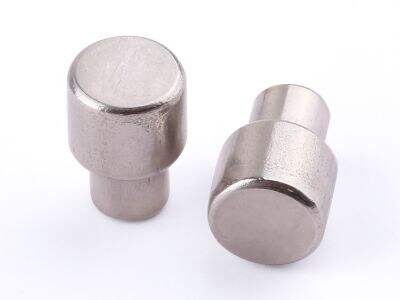Have you ever wondered how are screws made? Screws are very important tools that help hold things together, like pieces of furniture, machines or toys. They also come in various shapes and sizes to accommodate a wide range of needs. In this presentation, you will learn how DG Guyi screw are manufactured, which will give you an insight as to how raw materials are converted into finished goods. In this article, we will look at how screw-making has evolved, what new technologies have been developed, and the role of eco-friendliness in modern screw-making. Join us as we explore the history of screw production!
From Simple to Complex: An Arduous Path
It’s always interesting to see how making screws has evolved over the years. Screws were originally hand-made with primitive tools, such as chisels and knives. Then, craftspeople spent many hours painstakingly carving and shaping each screw. Then, in what we can refer to as the Industrial Revolution, people created machines that could move even faster than they could, which made the process of screw-making very fast and very accurate. These machines also produced screws in higher quantities and with greater precision. Modern screws are made by machines that can do much of the work automatically. This allows them to create screws quickly and with great detail. But even if the machines have changed, the basic steps to make screws have remained very much the same. One, starting with raw materials such as metal, is molded into long rods. Next, the rods are fed into a machine that cuts them and shapes them into the finished screw shape that we see.
A Tribute to Human Creativity
But the manufacturing process for screws is a killer example of the genius of human creativity and innovation. If you think about it, it is incredible that we can make little tools with threads that extremely hold things tightly. This capability of developing and polishing tools through the ages demonstrate how ingenious people could be. The concepts and enhancements that have contributed to screwing innovation are shocking better, more grounded, and quicker ways to screw in screws and the screws themselves. With the ever-advancing realm of DG Guyi self threading screws technology, we can look forward to further innovations in screw manufacturing. That will make screws more effective, efficient, and appropriate for a variety of applications.
New Machines and Custom Screws
The most significant change in the screws manufacturing is the use of automatic machines. The invention of these automated machines revolutionized screw manufacturing. This reduces errors in the final product, resulting in fewer defective screws for customers. These machines can also be customized to manufacture specialty screws for specific operations. Already screws can be adjusted for what they are intended to grasp, which makes them more effective than before. Automation in screw production has helped save a significant amount of time as well. This means a faster turnaround time for customers, who don’t have to wait long to get the screws they need.
Stronger Screws Made of Better Materials
The materials in which you find screws have changed a lot, too. Screws were made previously from basic materials such as wood or brass. These materials works for some applications but prefer them around weaker weren't strong or durable enough for today's needs. Today screws are made out of a lot stronger materials such as steel, titanium and aluminum. This is what has made screws greatly stronger and long-lived. New mixing techniques — metallurgy, in the industry vernacular — have also produced alloys even tougher than the older materials. Screws can be tough yet lightweight, making them convenient to maneuver as well as make use of.
Sustainable Practices in Screw Production
Screws can have an environmental impact which is why many companies are making a huge effort to be greener. They’re looking for ways to cut down on waste, recycle materials and build with renewable resources. Some even produce DG Guyi hex screw using a circular economy model. That means they aim to use materials that can be reused infinitely and produce no waste. Incorporating these sustainable practices preserves the environment, but it can also save money to minimize material expenses! It’s a win-win situation!
Conclusion
From their humble beginnings with just a few hand tools, screw manufacturing has come a long way in terms of complexity and sophistication in equipment. But even across all these modifications, the fundamental nature of screw-making as everything that holds things together has yet to be rewritten. This just shows how creative and innovatively people can be. Whether this is through materials, machines or sustainable practices, screws are better than ever. And as we move forward, we should expect even greater innovations in how screws are produced. We are Ecofriendly Company and produce world-class of screws according to customer needs. We remain dedicated to carrying on the path to innovation — while ensuring a healthy planet.




